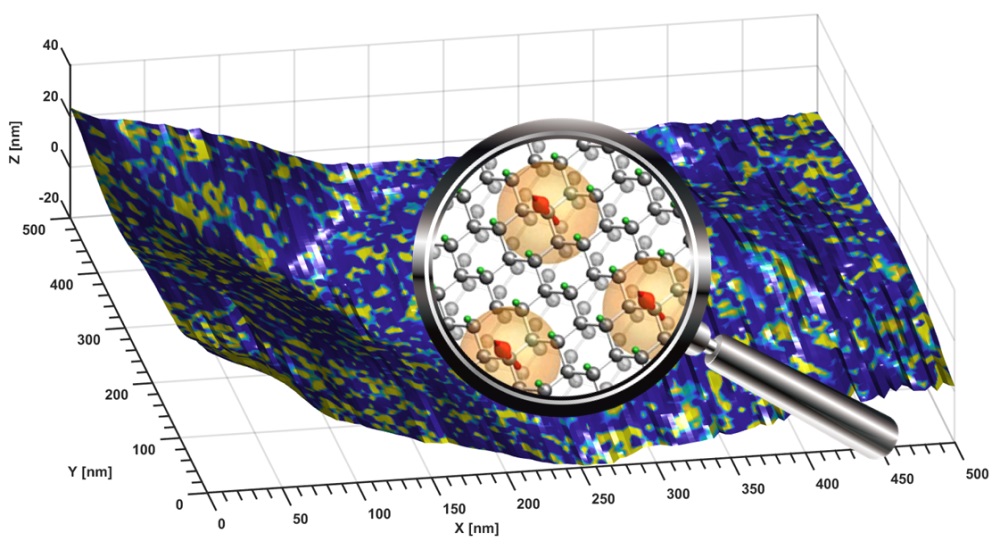One step closer to quantum computers

Research group from Centre of Low Temperature Physics led by Mgr. Tomáš Samuely, PhD. from Institute of Physics, Faculty of Science UPJŠ in Košice published its experimental results performed on superconducting ferromagnetic diamond in the latest issue of the esteemed American journal Science Advances. Science Advances with impact factor of over 12.8. is listed in the Nature Index. Study of Zhang, Samuely, Iwahara et al. (2020) confirms the high quality and international recognition of experimental physics at Faculty of Science, UPJŠ and SAS in Košice.
Using a low-temperature scanning tunneling microscopy, research group from Košice was able to identify simultaneous occurrence of two usually mutually exclusive phenomena, superconductivity and ferromagnetism. Researchers have shown that unusual combination of these states causes formation of Yu-Shiba-Rusinov bands – unique electron states with a range of tens of nanometers. Results of the experiments performed in Košice were confirmed by theoretical models within the international cooperation with experts from Denmark, Belgium, Germany, United Kingdom and Singapur.
The combination of ferromagnetic alignment of spins and superconductivity is a phenomena with application potential in spintronics or quantum technologies. Unlike conventional electronics whose working principle is based on electron flow, spintronics work only with a change of the spin (state of the electron) and thus there is no heat dissipation and heating of the circuit. So called Majorana bound states are formed at the interface between topologically non-trivial YSR bands and topologically trivial environment. They can be used as topologically protected qubits in quantum computers, resistant to decoherence, i.e. loss of stored information due to interaction of qubit with the surrounding environment. This is one of major technological challenges that prevents construction of quantum computer for practical use.
Although the implementation of this technology is still questionable, its contribution to quantum technology would be crucial and its development is led not only by academic institutions, but also technological companies such as Microsoft or Nokia Bell Labs.
Link to the study:
Zhang, G., Samuely, T., Iwahara, I., Kačmarčík, J., Wang, C., May, P.W., Jochum, J.K., Onufriienko, O., Szabó, P., Zhou, S., Samuely, P., Moshchalkov, V.V., Chibotaru, L.V., Rubahn, H.-G., 2020. Yu-Shiba-Rusinov bands in ferromagnetic superconducting diamond. Science Advances, 6 (20), eaaz2536
https://doi.org/10.1126/sciadv.aaz2536
Photo and orginal text: Faculty of Science UPJŠ (slovak language)
 Contact
Contact Intranet
Intranet SK
SK






